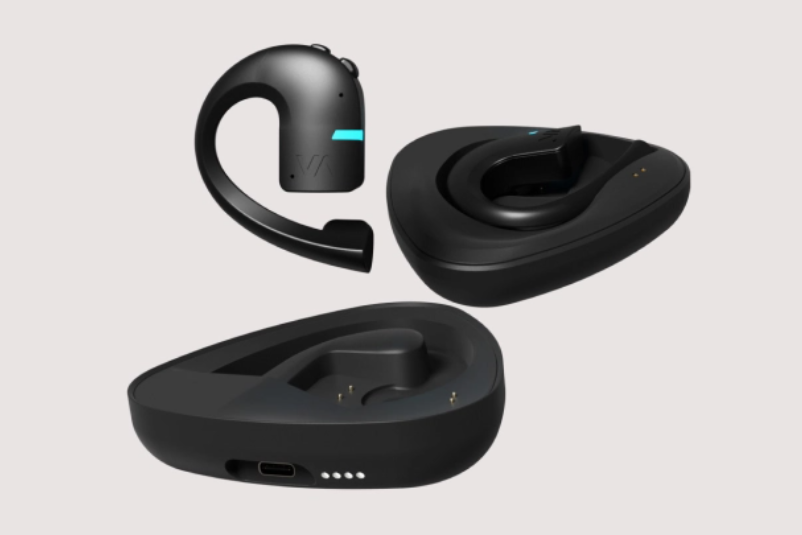During the pandemic, the volume of online shopping doubled due to necessity. According to the Office of National Statistics (ONS), e-commerce represented 38% of all retail sales in January 2021, in comparison to 19% in February 2020. This sudden shift forced brands to think about their omnichannel customer journey, particularly when it came to considering purchase items.
This was already the direction of travel, and while online sales proportions have dropped back to the mid-twenties (hitting 26%in January 2023), the acceleration of brands’ e-commerce plans has started a race to enhance operational agility to remain competitive and appealing.
The size of the drop indicates the ongoing power of in-store shopping and the importance of the omnichannel experience. However, we can expect the online share to return to a stable growth in the months to come.
It is not enough to present consumers with a transactional website, a well-considered data stack is needed to provide the customer experience they expect. The right set-up will help to identify consumers’ needs at each touchpoint, which is where performance marketing comes in.
Understanding the customer journey
As Google has now started the process of third-party cookie deprecation, brands are less able to track a user’s activity across multiple websites. This impacts business’ ability to recognise the full extent of the customer journey, and personalise and deliver targeted ads to support a better experience.
We can predict how certain factors will play a role in changing consumer behaviours through different kinds of tracking and experience. For example, we know that the consideration phase is likely to lengthen due to squeezed budgets as people take more care over how they spend their money. We can also expect that as the volume of retailers doing business online grows, the consideration phase will extend further as consumers look at their options across multiple touchpoints.
Trends like these need to be considered at every point of the journey, both online and in-store. Identifying changes like these is not always easy, and data should be at the heart of your strategy for enhancing audience engagement and discoverability, giving your brand the operational agility to succeed amid uncertain market factors.
Harnessing the potential of dashboarding
Without cookies, brands are working to optimise their consented first-party data, and work more closely with third-party sites and stores, so that they can gain an in-depth understanding of their customers that can shape their marketing activity accordingly. The current reality is that there is low metric transparency from third-party websites to the brands, as they, in turn, seek to monetise their proposition.
As many brands find themselves working with more third-party retailers, data and insight models become more important if they want to better serve their customers in a trustworthy way. Rather than relying on shared data, an end-to-end web scraping solution could help to marry e-commerce intelligence with insights from bricks-and-mortar retailing to provide visual and actionable trends.
This type of service provides a dashboard that consolidates insights from different websites, allowing brands to track other measurables, like share of voice, availability, pricing, promotion and reviews, and use the data to build more informed strategies.
Unlocking retail media potential
Retail media is a rapidly growing form of advertising, with global revenue from retailer e-commerce sites expected to exceed television revenue by 2028. For brands, the potential boon of reaching target consumers while they are already browsing or shopping in the category cannot be ignored.
Combining this type of digital advertising with physical shopping environments ensures that brands are showing up in the right places and times across relevant channels. When this is done well, relying on insights from data and human expertise ensures continuity within the purchase journey alongside consistent brand messaging, which will ultimately bring the consumer closer to making a purchase.
However, brands should be careful that they do not de-prioritise data and insight in their rush to play in the retail media space. As retail media supply increases, brands will have to manage campaigns across multiple networks, and it will be those with campaign control and strong insight reporting that will unlock the potential of the data to truly drive innovation in the space.
Building data into the digital shelf
Using data to understand consumers’ needs is the first step, but brands still need to think about what their insights mean for the digital shelf. Browsing the digital shelf is the equivalent of exploring products in-store, but they need to be discoverable quickly on listing pages and under relevant search terms.
Benchmarking against competitors for pricing, promotions and presence is critical and this data, along with on-site performance metrics, are incredibly valuable to brands. This can be a time-consuming process, but with an automated solution like web scraping, brands gain the same knowledge that can be used to form campaigns, and free up time for sales and marketing teams to focus on other priorities.
So, with the deprecation of cookies and the continued evolution of how we track and manage consumer data, brands should be prepared to optimise their own tracking data and work more closely with third-party retailers.
As retail media grows in years to come, keeping track of metrics across the board will become vital for brands if they are to maintain consistency, manage campaigns and influence presence and performance on e-commerce partner sites.
To read the published article written by Dan Todaro, Managing Director please visit Performance Marketing World
Photo by Negative Space















